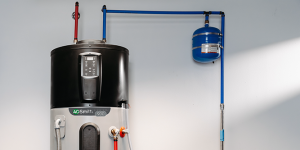By Jane McClure
Home improvement work in neighborhoods along Green Line light rail and an array of city programs are among those recommended for funding in 2024-2025. New playground equipment at Hancock Recreation Center and site improvements at West Minnehaha Recreation Center were among half a dozen projects that were shut out.
After weeks of deliberation, the St. Paul Long-Range Capital Improvement Budget (CIB) Committee June 26 approved its recommendations for capital projects. The recommendations go to Mayor Melvin Carter and the City Council for consideration in the 2024 city budget.
St. Paul has a longstanding capital budget process, set up by the Minnesota Legislature. For most of its history, dozens of projects competed every other year, with review by citizen task forces and the full CIB Committee. Some years more than 130 projects were in the hopper.
As costs climbed, only a few large projects could be funded each cycle. The process was changed about a decade ago. City department projects compete in odd-numbered years, with smaller-scale neighborhood projects in even years.
Because several large-scale projects were approved during the last city department cycle, no large new projects were brought forward for 2024-2025. Project are funded from two sources, capital improvement bonds and federal Community Development Block Grants (CDBG).
An East Side sidewalk project and work on the Gold Line rapid bus capital improvements are among $8.7 million in capital improvement bonds split between the next two years. Most funding is for ongoing capital needs including trails, sidewalks, sports courts, tree planting, bike facilities, pedestrian improvements, and other city programs.
CDBG money will support 19 projects. That money is used for some city housing and commercial rehabilitation programs and demolition of vacant buildings, as well as community development corporation projects.
The highest-rank area-specific project is $200,000 per year for NeighborWorks Home Partners’ home repair focus for neighborhoods along Green Line light rail. A second home repair loan program is recommended for the same amount. NeighborWorks had requested $600,000 for each program.
Six projects didn’t make the cut for CDBG dollars, including site improvements at West Minnehaha at $263,300; and $425,000 for playground replacement at Hancock. The third area project out of the running was the second phase of improvements to the Western Sculpture Park, at $185,000.
CIB Committee members said they wanted to fund at least one playground, and settled on Carty Park. If a playground is in an area with lower median incomes, it can be funded with CDBG. Playgrounds are ranked low, medium, high and urgent in terms of replacement priority. Conditions are ranked poor, fair or good. About a dozen parks citywide are in urgent need of work.
Hancock’s last playground update was in 2010. It is considered to be in poor condition, with high priority for replacement. The park that made the CDBG cut, Carty Park in Summit-University, was last updated in 1997. It is in poor condition and the need for replacement is “urgent.”
Parks and Recreation oversees 85 playgrounds. Four, including the playground at Northwest Como Recreation Center, are owned and operated by St. Paul Public Schools. The other 81 are maintained by the city. Age is not always an indicator of condition. College Park playground in St. Anthony Park dates from 2000 and is in fair condition, with a medium priority for replacement. Groveland Park in Macalester-Groveland also dates from 2000 but is in poor condition, with an urgent need for repair.
Read the full article here














